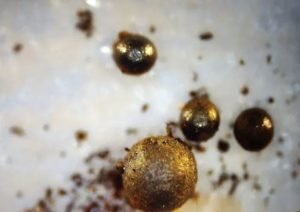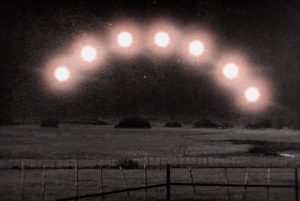Metallic spherules are discovered on the ocean floor by Avi Loeb’s expedition

 Experts continue to search for evidence of the existence of extraterrestrial life. Harvard scientist Avi Loeb, who is leading an expedition to search for interstellar remains, has announced the discovery of tiny metal balls at the bottom of the Pacific Ocean associated with the first recognized interstellar meteorite IM1.
Experts continue to search for evidence of the existence of extraterrestrial life. Harvard scientist Avi Loeb, who is leading an expedition to search for interstellar remains, has announced the discovery of tiny metal balls at the bottom of the Pacific Ocean associated with the first recognized interstellar meteorite IM1.
The IM1 meteorite that exploded over Papua New Guinea in 2014 was the precursor to the sensational Oumuamua meteorite discovered in 2017. However, Loeb and his team suggest that IM1 may have a different origin.
Their theory is that these objects may be the result of an artificial construct from a highly advanced alien civilization. The main goal of scientists is to collect enough meteorite fragments to confirm or disprove this hypothesis.
As a result of recent research, Loeb’s team found traces of small metal wires on the ocean floor. However, the most exciting thing about this discovery is the discovery of tiny metal balls.
Using an X-ray fluorescence analyzer, the scientists were able to determine that these balls were composed mainly of iron with magnesium and titanium added, but did not contain nickel. According to Loeb, this composition is “anomalous” compared to human-made alloys.
“We are now returning to the IM1 crash site in order to retrieve as many spherules as possible,” notes Loeb. “Having a large enough sample, we can obtain a gamma-ray spectrum that will help determine the presence of radioactive elements and possibly date the sample.”
The challenge facing researchers is undoubtedly exciting. Was this first discovered interstellar object since 2014 created by a highly advanced technological civilization? The answer to this question may lie in the depths of the Pacific Ocean.
“When we return, we will be able to create a laboratory alloy with a composition similar to the one we determined for the balls, and analyze the properties of the resulting material,” says Loeb.
“We are now on our way back to IM1’s crash site in an attempt to retrieve as many spherules as possible,” Loeb wrote. “With a large enough sample, we can obtain a gamma-ray spectrum that will characterize its radioactive elements and potentially date the sample.”
“The fundamental question is obvious: was this first recognized interstellar object from 2014 manufactured by a technological civilization?”
“Upon our return, we could produce an alloy in the laboratory that has the same composition as we infer for the spherules and analyze the resulting material properties.”
There is no doubt that this riddle will occupy the minds of researchers for a long time to come. The discovery of tiny metal balls could be the key to understanding the possible existence of intelligent life outside of our planet.
Greetings, explorer! We thank our supporters from the bottom of our hearts for their generous donations that keep anomalien.com alive. If you’d like to join the cause and help us continue to deliver amazing articles, please consider making a donation. Let’s keep the 👽 smiling!Follow us on Instagram, Twitter and Telegram for interesting and mysterious bonus content!




